By: Hanna Hone and Chantel Doyle – QES Vet Interns – Aug 15, 2019
This week in Meru County began with a tour of a Dairy we had not visited yet, Ex-Lewa. Like other Dairy groups, they have an extensive animal and agriculture store where farmers can buy supplies based on milk credit, and the cost of purchases is removed from their milk payment at the end of each month. This acts as an incentive to join the Co-op because it aids to optimize the farmers’ crop and milk production by buying things on credit when they need it rather than wait until they can afford it. We were proud to see that Farmers Helping Farmers has donated both seeds and seed dispersal equipment to the Ex-Lewa Dairy so that the farmers can seed alfalfa and other seeds and therefore have easier access to good quality forage.
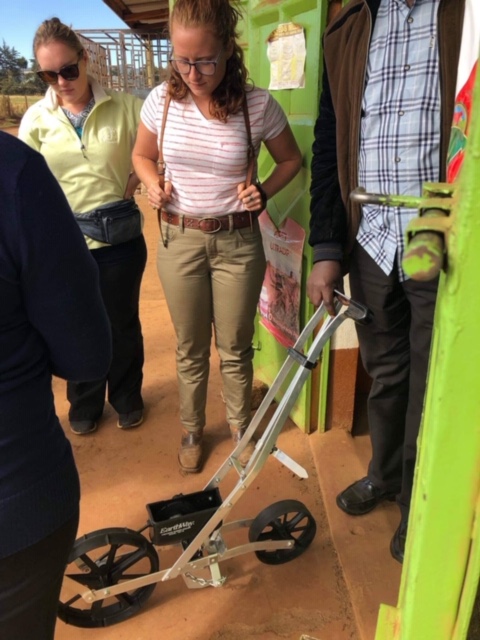
(Pic 1: Checking out some garden toys; Hanna with a Lucerne seeder)
The Ex-Lewa Dairy Chairman – Murori Munya – also showed us a new project; the milling room where the dairy produces its own in-house dairy meal with a well-rounded and balanced formula. The Dairy regulates the ingredients and quality to help farmers increase the health and milk production of their cows. Our tour was followed by a presentation on zoonotic diseases by the Ontario Veterinary College students working with Vets Without Borders-Canada, Laura and Lexie. We were excited that our Canadian friends were finally in our neck of the woods after presenting at multiple locations throughout the summer. The seminar took place at a member’s farm, and after prayers and introductions, they educated farmers on good hygiene practices and biosecurity before diving deeper into the symptoms, prevention and treatment of various zoonotic and reportable diseases, with the help of a translator.

(Pic 2: Vets Without Borders Ex-Lewa Seminar; Laura, Lexie and translator Priscilla)
We were so impressed with their poise and confidence presenting such an intricate topic, and their ability to effectively answer difficult questions from the farmers. Of course, they have been doing this all summer, so they have honed their messages and are a well-oiled machine now. They even provided summary sheets for them to take home should they forget any information or want to share the main points of the presentation with friends and family. This event was held outside and, as the sun beat down, many people were visibly concerned for our health. This concern quickly turned into sheer panic when Hanna had yet another epically timed nosebleed, which they attributed to too much sun exposure. Luckily our trusted driver Kenyatta was able to clarify to the farmers that she was fine and that it ‘just happens sometimes’.
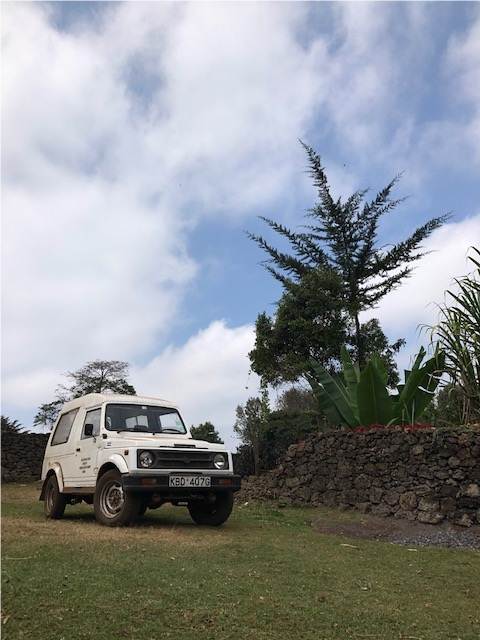
(Pic 3: The Immortal Beast)
The following day we were reunited with the Gypsy!! Yeah! Just when you think she’s out for the count she rebounds like a champ, and with the new steering column, was ready to hit the farms again. We returned to Naari to recruit more farms and locate and examine previously vaccinated cows, but of course, in classic Hanna and Chantel fashion, we also discovered a needy dog. This sweet pup had what looked like a small superficial wound that was not healing properly. After some soaking and debriding we uncovered that it was actually very large and extended from the base of the right ear to the shoulder. What caused it will always be a mystery but, after providing some pain medication, we were able to clean up the poorly formed and infected scab, disinfect the wound and provide a protective antibiotic topical spray
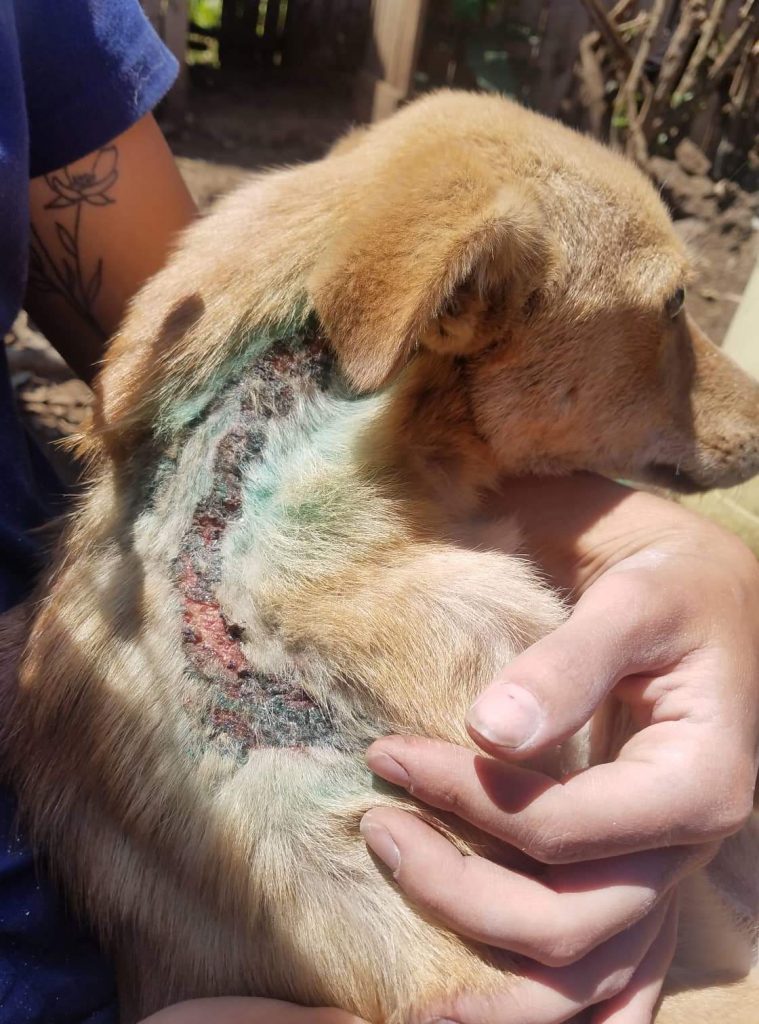
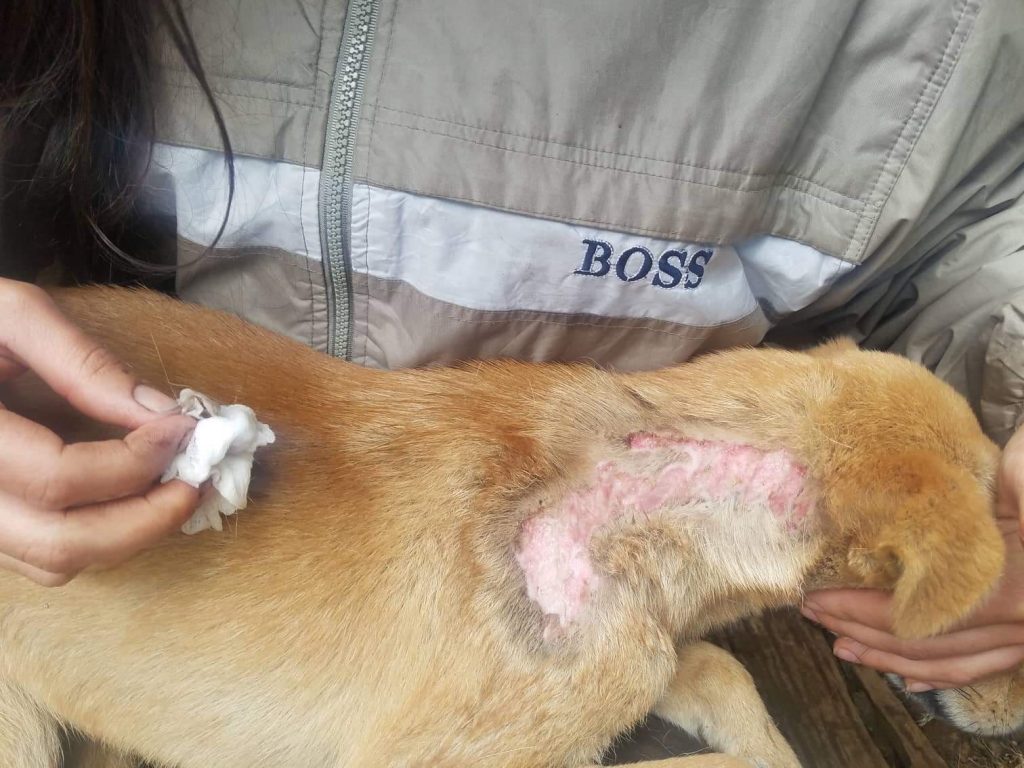
(Pic 4a & b – The scab that never ended; and the wound mostly healed).
A daughter of the family stuck by our side during the entire process and the dog was comforted by her presence. It was endearing to see such a strong bond between them. She also provided a room in the house (this is a big deal!) for the dog to heal over the next few days, as the previously worn metal chain would irritate the injury site. Surprisingly, an infected wound is pretty low on our “grossness” scale, especially in comparison to the ticks that have quickly “crawled” their way up to the top of this scale. Our down time during one of Thursday’s interviews was spent picking off and squishing the hundreds of ticks attached to the farmer’s cows. We explained that, not only do ticks spread disease but they also put a huge physical strain on the animals. An infestation of this magnitude results in blood loss causing anaemia, decreased immunity, and stress which can all contribute to decreased milk production. We ended up treating one of her cows for East Coast Fever and tried to reinforce the idea that prevention is always cheaper. Ticks are more than just a “gross nuisance” and we always encourage farmers to zero-graze, cut forages one day and feed the next (so ticks on the grass will crawl off), and spay regularly/weekly with an effective insecticide.

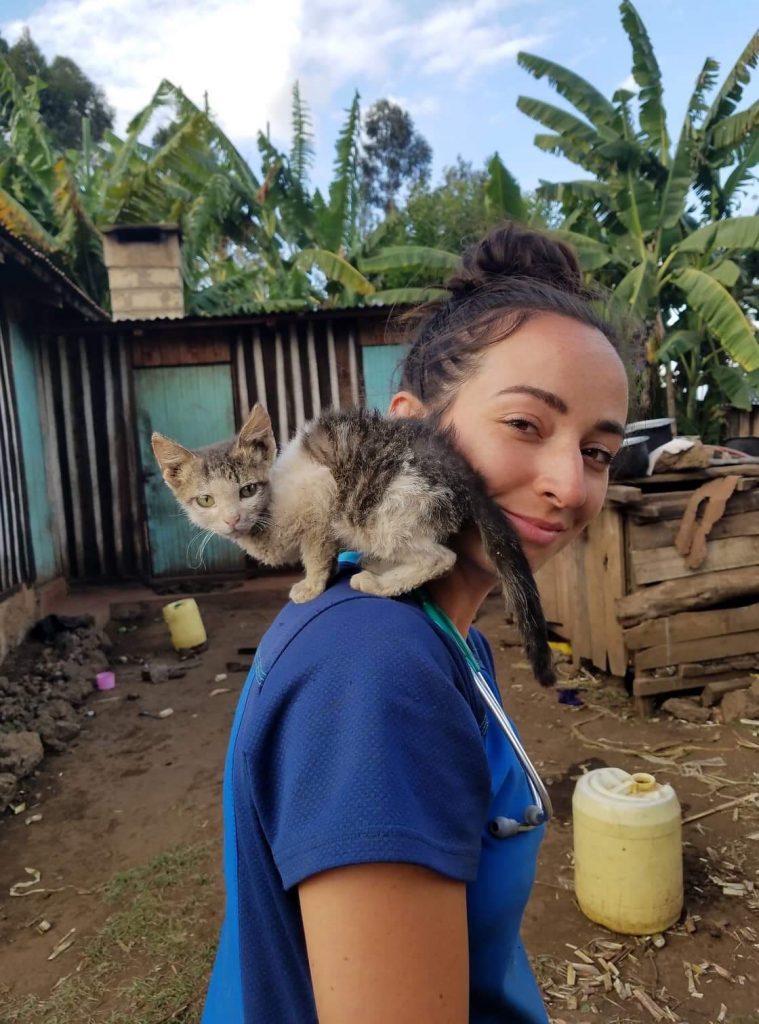
(Pic 5a & b: Hanging with the Homies)
As per usual, we made more furry friends this week – see the photos. We made some amazing human friends this week as well. An entire crew of curious children helped us navigate our way to each farm while adorably fighting over who was going to carry our supplies. They were great company and proved very helpful filling our bucket to scrub our boots, handing us the level for measuring heights and passing us supplies but also being quiet and respectful when necessary. The language barrier was no match for our drive to have fun, and our free time was spent having piggyback races and goofing around, as we waited for Daniel to finish his part of the farm visit activities.
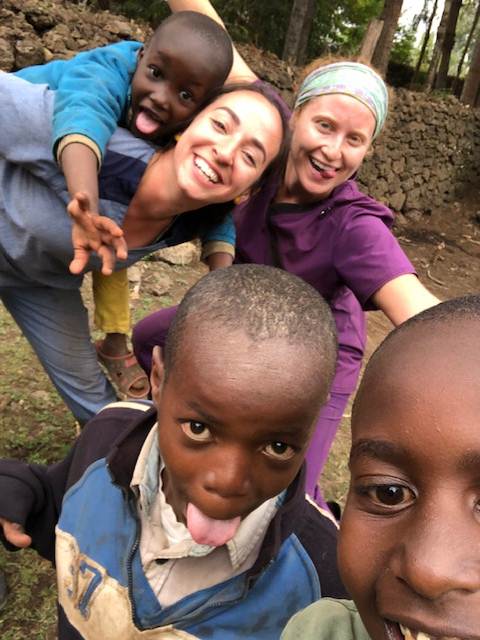
(Pic 6: We work hard and play harder)
The children also pointed us to a kitten that desperately needed help due to some kind of i. She had returned home hopping, but had progressed to hind end paralysis by the time we arrived less than an hour later. She was bright alert and responsive, didn’t protest our range of motion examination, despite the trauma, and maintained a weak withdrawal reflex and peripheral pulses. Unfortunately she had no cognitive proprioception and was unable to bear any weight. We administered a steroid and set her up a good warm and dry recovery area with a make shift litter box and milk bowl. We recommended monitoring closely, rotating sides to protect blood flow and nerve function in both legs, and giving ample time to recover. This was a very difficult case to see both emotionally and medically since we had very few diagnostic options to assess how severe her injuries may have been. We are very grateful to her family for being willing to follow our care instructions and we are hoping for the best every time we call to check in.
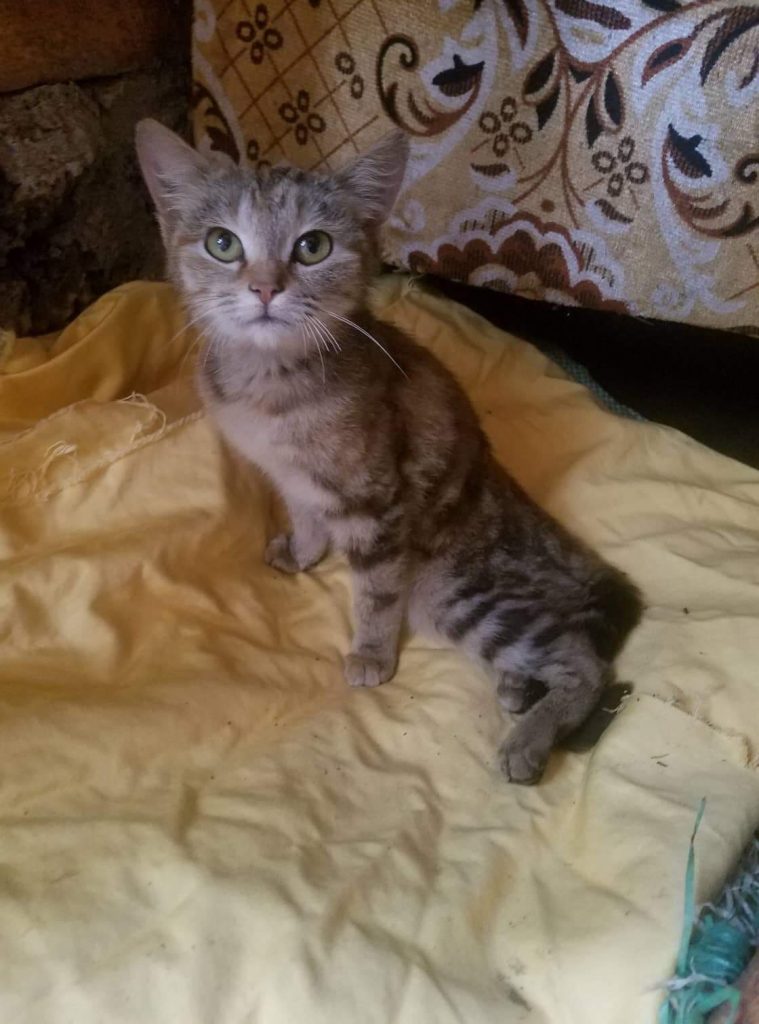
(Pic 7: Paralysed kitten -nothing could phase this sweet brave girl).
Since this is one of our last weeks here in Meru (…. silent sobs), we decided to have some guests over on Saturday for tea and snacks to show our appreciation. We had the pleasure to work with a variety of amazing people and will cherish those relationships forever, so we wanted a chance to say goodbye in person. As we prepared for the evening’s event you would think we’d be focused on cleaning up and prepping food, but alas we were found over at the neighbours’ with their cow. One of girls caught our attention while we picked wild flowers for centerpieces and expressed that something was wrong while pointing at the heifer’s head. Upon examination she had a gnarly infection brewing inside one of the horn hubs after a late dehorning. As a cow grows and horns emerge as ‘nubs’ they should be dehorned as soon as possible by a professional who can provide local anaesthetic and pain management. What many farmers don’t realize is that as the horn grows, it becomes a hollow continuation of the skull sinuses. So when the horns are removed, holes in the sinuses remain in the skull. If nothing is given for preventing infection and flies from entering the wounds where the horns used to be, the risk of infection is very high and that is what we witnessed that day. Without signs of infection elsewhere, we decided to flush with dilute hydrogen peroxide followed by dilute iodine, and finished with a topical antibiotic spray that doubles as a fly deterrent. We will continue this treatment for the next few days while allowing the infection to drain and the wound to heal from the inside out. Afterwards, there was very little time to finish getting ready for our guests but we have never once regretted spending time helping out the animals and still had a lovely evening catching up with all our Kenyan friends!
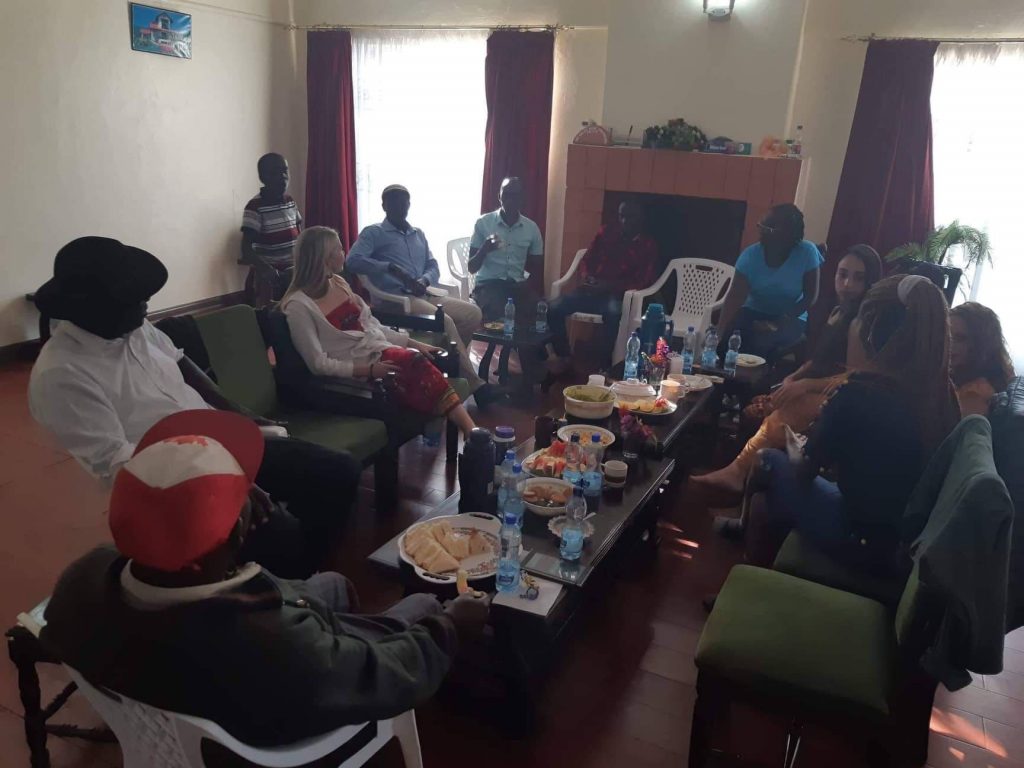
(Pic 8: Farewell friends)
If our farewell party wasn’t enough of a wake up call to how little time we have left, Sunday sure was! Our driver, Chantel, shuttled us to our last ever market day and we basked in the ‘oh so familiar’ stares and dropped jaws that we will inevitably miss. We were able to get some beautiful fabrics with exciting patterns and bright colors that remind us of Kenya and even tried on some traditional winter hats!
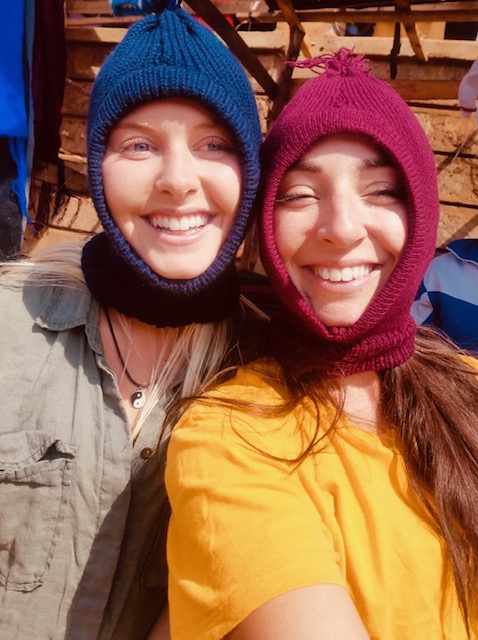
(Pic 9: Haley and Chantel. Perfect for Canada, wouldn’t you say?)
We sure have come a long way from being overwhelmed by the bustle and chaos that is market day. We know our vendors, barter for goods and greet some familiar faces from the community along the way. As we embark on our last week working here in Meru County we will not be taking any time for granted. There are many more candidates to recruit, blood draws to complete, animals to treat and goodbye hugs to give!
H&C
